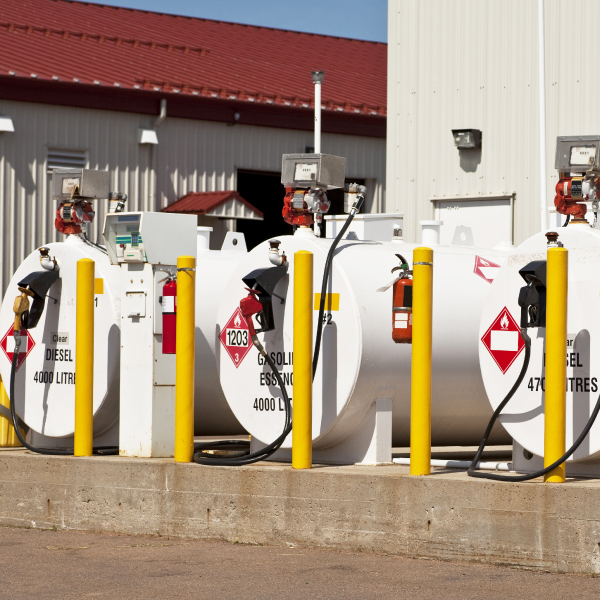
The Ministry of Mines and Energy published the draft decree, whereby it regulates Article 245 of Law 2294 of 2023 or National Development Plan and makes changes to Decree 1073 of 2015, in relation to the control of supply of fuels in border areas.
The draft decree modifies articles 2.2.1.1.2.2.6.7 and 2.2.1.1.2.2.6.9 and adds three articles to Decree 1073 of 2015.
Regarding the changes proposed by the Decree, we highlight the following:
In first place, referred to Article 2.2.1.1.2.2.6.7, which develops the scope of distribution of liquid fuels derived from petroleum in border areas; the Draft Decree adds refining within the activities that it includes. In addition, it establishes that the Ministry of Mines and Energy will design a fuels supply scheme for border areas that will consider:
- The maximum volumes of fuels established for each municipality.
- The optimal conditions for the distribution of fuels in the municipalities considering economics and logistics.
- The supply plants located in the corresponding border department.
- Supply plants located in municipalities of other departments with technical and economic possibilities to supply them.
- Service stations located in border areas.
Additionally, the distribution of fuels and/or the activities conducted for supply plans must consider the conditions of each municipality in the border area, considering cost-efficiency.
Another important modification proposed by the draft decree is the exclusion of the tax benefits indicated in article 220 of Law 1819 of 2016 or the rule that modifies or replaces it, for fuel purchased by large consumers in border areas.
Additionally, on Article 2.2.1.1.2.2.6.9, which refers to the methodology for the distribution of fuels with tax benefits in the border area, the draft decree added a market saturation as part of the criteria to allow the construction of new service stations.
Moreover, it modified the power of the Ministry of Mines and Energy to update, modify or temporarily reformulate the aforementioned methodology before the expiration of its term upon the occurrence of situations that put at risk the continuity and / or reliability of the fuel distribution chain of fuels in the border areas.
It also added a paragraph, in which it establishes that as of the draft decree is in force, the National Planning Department must conduct, every twenty-four months, a study on the application and implementation of public policies related to fuels in border areas.
The results of this study, and its implementation will be evaluated by the Ministry of Mines and Energy and the Ministry of Finance and Public Credit, or the entity designated at the time of issuing or modifying the methodology mentioned in this article.
On the other hand, the Draft Decree added three articles to Decree 1073 of 2015:
- Article 2.2.1.1.2.2.6.22. Implementation of technological mechanisms to control the distribution of liquid fuels derived from petroleum to final consumers: The Ministry of Mines and Energy, through the Direction of Hydrocarbons and in collaboration with other entities, may implement technological tools to control regulatory compliance of the distribution of fuels liquids in border areas.
These mechanisms may include control and verification of volumes delivered, monitoring of fuel quality, prevention of smuggling and tax evasion, and price control. Thus, it seeks to ensure compliance with current regulations and avoid abusive practices with real-time information.
- Article 2.2.1.1.2.2.6.23. General guidelines for the concept of saturation of the liquid fuels market in border areas: Through this article, the Ministry of Mines and Energy, in collaboration with the Ministry of Commerce, Industry and Tourism will establish guidelines to determine and apply mechanisms and measures that maintain an adequate balance in the distribution of fuels in border areas. The objective is to promote competition in the market, avoid the excessive proliferation of supply plants and service stations, and guarantee the quality and safety in the distribution of fuels in these areas.
Additionally, the Ministry of Commerce, Industry and Tourism, through the Superintendence of Industry and Commerce (SIC) or its delegate, must conduct an initial market saturation study within eight months, including:
- The demand and supply of fuels in that area. In addition, it is necessary to conduct a geographical analysis.
- The growth in fuel consumption.
- The number of inhabitants in the area and the size of the vehicle fleet.
- Service stations or supply plants and their storage capacity.
- The logistics required for the delivery of fuel and the costs associated with such logistics.
- The variable of the ten most affected departments by the presence of illicit crops, as established in Resolution 0001 of January 8, 2015, issued by the National Narcotics Council.
- Finally, other aspects that the competent entities consider necessary for the study must be considered.
This study will be updated every two years and will serve as a basis for allocating the maximum volumes of fuels in border areas, as established in Decree 1073 of 2015.
- Article 2.2.1.1.2.2.6.24. Concept of market saturation of liquid fuels derived from petroleum in border areas: This article establishes that before applying for the license for the construction of service stations and storage plants in border areas, interested parties must obtain a favorable concept of non-saturation of market issued by the Ministry of Mines and Energy, through the Direction of Hydrocarbons. The territorial authority will use this concept to grant or deny the building license in those areas.
The Ministry of Mines and Energy published this draft decree for comments until June 21st 2023.
To consult the draft decree, enter the following link: